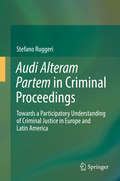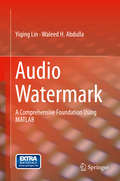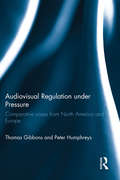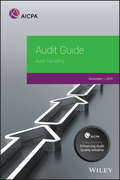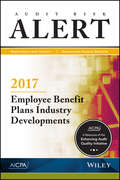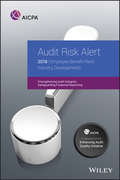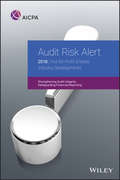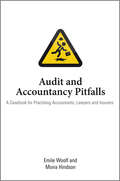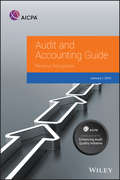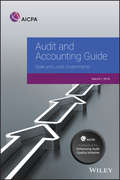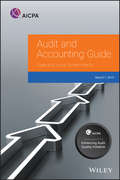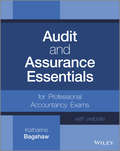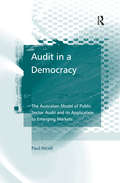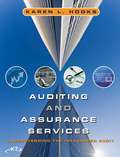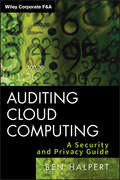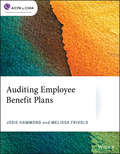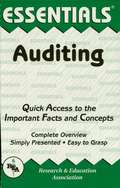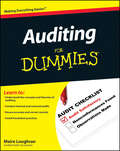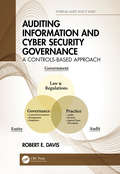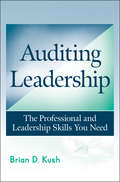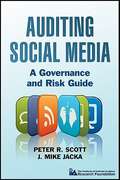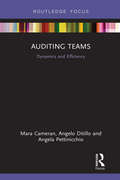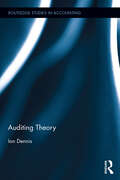- Table View
- List View
Auburn Police (Images of America)
by Joseph E. Divietro Jr.Auburn Police traces the history of the Auburn Police Department, which dates back to the mid1800s. It portrays many of the faces of those people who have devoted 20, 30, or more years of service to their community. Although a number of aspects of law enforcement have changed over the years, the very principle of the police officer interacting with the public remains the same.
Audi Alteram Partem in Criminal Proceedings: Towards a Participatory Understanding of Criminal Justice in Europe and Latin America
by Stefano RuggeriThis book analyses current developments in Europe and Latin America towards the greater involvement of the parties in the administration of criminal justice. Focusing on both national criminal proceedings and transnational cases, this study employs a comparative law approach to examine the shift experienced by Italy and Brazil from the long tradition of mixed criminal justice to unprecedented adversarial trends. The identification of common needs and divergences from the national approach to criminal justice paves the way for a subsequent analysis of new solution models emerging from international human rights law and EU law. To a great extent, these developments are due to the increasing impact of international human rights case-law on the criminal justice systems of the countries in question. The book concludes by proposing a set of qualitative requirements for a participatory model of criminal justice.
Audio Watermark: A Comprehensive Foundation Using MATLAB
by Yiqing Lin Waleed H. AbdullaThis book illustrates the commonly used and novel approaches of audio watermarking for copyrights protection. The author examines the theoretical and practical step by step guide to the topic of data hiding in audio signal such as music, speech, broadcast. The book covers new techniques developed by the authors are fully explained and MATLAB programs, for audio watermarking and audio quality assessments and also discusses methods for objectively predicting the perceptual quality of the watermarked audio signals. Explains the theoretical basics of the commonly used audio watermarking techniques Discusses the methods used to objectively and subjectively assess the quality of the audio signals Provides a comprehensive well tested MATLAB programs that can be used efficiently to watermark any audio media
Audiovisual Regulation under Pressure: Comparative Cases from North America and Europe
by Peter Humphreys Thomas GibbonsIn the face of globalization and new media technologies, can policy makers and regulators withstand deregulatory pressures on the ‘cultural policy toolkit’ for television? This comparative study provides an interdisciplinary investigation of trends in audiovisual regulation, with the focus on television and new media. It considers pressures for deregulation and for policy in this field to prioritise market development and economic goals rather than traditional cultural and democratic objectives, notably public service content, the promotion of national and local culture, media pluralism and diversity. The book explores regulatory policy in the United States, Canada, the United Kingdom and Europe. The book focuses on a range of instruments designed for promoting pluralism and cultural diversity, particularly the role of public service broadcasting and the range of measures available for promoting cultural policy goals, such as subsidies, scheduling and investment quotas, as well as (particularly national) media ownership rules. The book draws on findings of two research projects funded by the UK Economic and Social Research Council and is written in an accessible style by leading scholars of media law and policy, who bring to bear insights from their respective disciplines of law and political science.
Audit Guide: Government Auditing Standards And Single Audits 2017 (AICPA Audit Guide)
by AICPAUpdated as of December 1, 2019, this guide continues to be an indispensable resource packed with information on sampling requirements and methods. It introduces statistical and nonstatistical sampling approaches, and features case studies illustrating the use of different sampling methods, including classical variables sampling and monetary unit sampling, in real-world situations.
Audit Risk Alert: Employee Benefit Plans Industry Developments, 2017
by AicpaThe increasing complexity of employee benefit plan auditing and increased focus by the DOL have resulted in significant pressure for CPAs and firms performing EBP audits. To help CPAs meet the challenge of performing quality audits in this unique and complex area, the AICPA has developed this alert to assist in identifying current sources of risk within EBP audit engagements. A targeted discussion on new developments, issues auditors may face in their current audits, as well as a look at what’s in the pipeline that may affect their engagements is provided. Updates include: FASB ASU No. 2015-07, Fair Value Measurement (Topic 820): Disclosures for Investments in Certain Entities That Calculate Net Asset Value per Share (or Its Equivalent) FASB ASU No. 2015-10, Technical Corrections and Improvements FASB ASU No. 2015-12, Plan Accounting: Defined Benefit Pension Plans (Topic 960), Defined Contribution Pension Plans (Topic 962), Health and Welfare Benefit Plans (Topic 965): (part I) Fully Benefit-Responsive Investment Contracts, (part II) Plan Investment Disclosures, (part III) Measurement Date Practical Expedient FASB ASU No. 2017-06, Employee Benefit Plan Master Trust Reporting FASB ASU No. 2016-01, Financial Instruments - Overall (Subtopic 825-10): Recognition and Measurement of Financial Assets and Financial Liabilities
Audit Risk Alert: Employee Benefit Plans Industry Developments, 2018
by AicpaDeveloped by a task force consisting of current and former employee benefit plan expert panel members, this alert offers a range of topics such as master trust reporting, cybersecurity, new proposed auditor's reports, electronic information, limited-scope certification, and new auditing standards such as PCAOB AS 3101. The increasing complexity of employee benefit plan auditing and increased focus by the DOL have resulted in significant pressure for CPAs and firms performing EBP audits. To help accountants meet the challenge of performing quality audits in this unique and complex area, the AICPA has developed this alert to assist them in identifying current sources of risk within EBP audit engagements. Accountants will find a targeted discussion on new developments, issues auditors may face in their current audits, as well as a look at what's in the pipeline that may affect your engagements. Key benefits of this work include: Coverage of emerging practice issues, including direct versus indirect investment in fully benefit-responsive investment contracts, readily determinable fair value, disclosures for investments in certain entities that calculate NAV per share (or its equivalent), plan expenses, and repurchase agreements An in-depth look at master trust reporting, electronic information and the new PCAOB auditing standard AS 3101 Analysis of high risk areas specific to defined benefit pension plans, such as pension benefit guaranty corporation premiums and reporting, demographic and economic assumptions, and pension risk management Current developments on health and welfare plans, including health care reform and its effect on employee benefit plans Up-to-date information on regulatory development from both the DOL and IRS
Audit Risk Alert: Employee Benefit Plans Industry Developments, 2019 (AICPA)
by AICPAThe increasing complexity of employee benefit plan auditing and focus by the Department of Labor have resulted in significant pressure for CPAs and firms performing EBP audits. To help CPAs meet the challenge of performing quality audits in this unique and complex area, the AICPA has developed this alert to assist in identifying current sources of risk within EBP audit engagements. Written by a task force consisting of current and former employee benefit plan expert panel members, this alert features discussions on new developments and issues that auditors may face in their current audits, as well as a look at what's in the pipeline that may affect your engagements. Updates in 2019: FASB ASU No. 2017-06, Employee Benefit Plan Master Trust Reporting FASB ASU No. 2018-09, Codification Improvements FASB ASU No. 2018-13, Fair Value Measurement (Topic 820), Disclosure Framework–Changes to the Disclosure Requirements for Fair Value Measurement
Audit Risk Alert: Not-for-Profit Entities Industry Developments, 2018 (AICPA)
by AicpaNew standards for financial statement presentation and revenue recognition have created many not-for-profit financial reporting changes. Combine those with today's technology-centered environment and the ever-present scrutiny of exempt organizations by the IRS and watchdog and rating agencies, and accountants, auditors, and financial managers may wonder how they'll ever tackle all the associated risks. This alert takes discusses the important developments affecting not-for-profit entities in 2018, and the issues auditors may face. It's jam-packed with targeted discussions of current economic, accounting, and auditing issues affecting nonprofits, as well as changes on the horizon. Topics range from business environment issues like cybersecurity to accounting and auditing challenges like implementation of FASB's new financial statement standard (ASU No. 2016-14) and valuation of gifts-in-kind. This alert also covers legislative and regulatory issues like UBIT, debt-financed property rules, and tax reform provisions of interest to exempt organizations, as well as the new auditing standard on auditor involvement with exempt offering documents. Among other topics, this alert focuses on risks related to recent nonprofit industry trends, financial statement presentation changes, revenue recognition, and fair value issues. A discussion of tax reform provisions affecting exempt organizations is also included as well as information on emerging issues such as: Revenue recognition for grants and contracts Phase 2 of FASB's not-for-profit financial statement presentation project Changes to the auditor's report Cybersecurity Blockchain and other transformative technology Awareness of key trends affecting the nonprofit environment informs audit planning, risk management, strategic planning, and oversight, thereby promoting greater success and sustainability of not-for-profit entities.
Audit and Accountancy Pitfalls
by Moira Hindson Emile WoolfAuditors and accountants face many challenges as the fallout from the financial crisis continues. Companies and individuals who have incurred losses are likely to turn the spotlight on their financial advisors who failed to keep them out of trouble. The enormous rise in fraud due to the recession will undoubtedly give rise to the age-old cry 'Where were the auditors?'Audit and Accountancy Pitfalls is a one-of-a-kind casebook of professional negligence claims against auditors and accountants. Written as a practical reference for accountancy practitioners and their advisors, the authors draw on their personal experiences as expert witnesses, and from insurers' case files to provide a set of real life case studies illustrating the professional challenges facing all accountants and auditors, adding practical guidance on how to manage these situations effectively.Coverage includes:*Claims against auditors for failing to detect fraud*Other claims against auditors.*Claims against accountants*Tax related claims*Disciplinary actions against accountantsThe cases described in this book will provide many salutary warnings to practitioners in virtually every field of accountancy. Although all names have been changed to protect the guilty, the events and outcomes described are real. In each instance the authors set out what went wrong and the lessons to be learned from the mistakes made, making this a thought-provoking read.Written by an author team with over 40 years' collective experience in dealing with litigation in accounting and auditing, Audit and Accountancy Pitfalls will be an indispensable reference for auditors, accountants and anyone involved in claims involving allegations of negligence against professional accountants.
Audit and Accounting Guide: Revenue Recognition 2019 (AICPA Audit and Accounting Guide)
by AicpaASC 606, Revenue from Contracts with Customers, replaces almost all previously existing revenue recognition guidance, including industry-specific guidance. That means unprecedented changes, affecting virtually all industries and all size organizations. For preparers, this guide provides the comprehensive, reliable accounting implementation guidance you need to unravel the complexities of this new standard. For practitioners, it provides in-depth coverage of audit considerations, including controls, fraud, risk assessment, and planning and execution of the audit. Recent audit challenges are spotlighted to allow for planning in avoiding these new areas of concern. This guide includes 16 industry-specific chapters for the following industries: Aerospace and Defense, Airlines, Asset Management, Broker-Dealers, Construction Contractors, Depository Institutions, Gaming, Health Care, Hospitality, Insurance, Not-for-Profits, Oil and Gas, Power and Utility, Software, Telecommunications, and Timeshare.
Audit and Accounting Guide: State and Local Governments 2018 (AICPA Audit and Accounting Guide)
by AicpaWith all the recent changes in state and local government audit and accounting, including changes to some of the more complex areas such as pensions and post-employment benefits other than pensions (OPEB), accountants and financial managers can't afford to be without the most current guidance. This authoritative guide provides complete coverage of audit and accounting considerations critical for both preparers and auditors. This edition includes two new schedules: Governmental Employer Participation in Single-Employer Plans: Illustrative Schedule of Pension Amounts and Report; and, Illustrative Notes to Schedule of Employer Allocations and Schedule of Pension Amounts. It also provides insights, comparisons, and best practices for financial reporting and the financial reporting entity, revenue and expense recognition, capital asset accounting, the elements of net position, accounting for fair value, municipal securities offerings, tax abatements and much more.
Audit and Accounting Guide: State and Local Governments 2019 (AICPA Audit and Accounting Guide)
by AicpaState and local government audit and accounting is changing rapidly. This title features insights, comparisons, and best practices for some of the more complex areas such as pensions and post-employment benefits other than pensions (OPEB), this authoritative guide provides complete coverage of audit and accounting considerations critical for both preparers and auditors. This edition includes dual guidance for accountants and auditors early implementing GASB Statement No. 84, Fiduciary Activities. Topics covered also include: • Financial reporting and the financial reporting entity • Revenue and expense recognition • Capital asset accounting • The elements of net position • Accounting for fair value • Municipal securities offerings • Tax abatements
Audit and Assurance Essentials
by Katharine BagshawAn accessible beginner's guide to the fundamentals of audit and assurance Audit and assurance is a basic and vital aspect of the financial world and a key element of all professional accountancy programs. Whereas professional training on the topic frequently immerses students in too much detail while glossing the basics, this book begins with the fundamentals and expands to cover the details in a more measured way. With practical examples and end-of-chapter examples, External Audit and Assurance Essentials breaks down a difficult and challenging field of professional accounting.
Audit in a Democracy: The Australian Model of Public Sector Audit and its Application to Emerging Markets
by Paul NicollExploring the role of public sector audit in emerging democracies and developing countries, this book provides an account of the relationship between the public sector auditor, the legislature and executive government. In particular, it introduces public sector audit's capacity to assess government agencies' compliance with the law and their management of taxpayer or internationally funded programs and services. The volume: ¢ Explores the Australian model of public sector audit. ¢ Provides a definition of a supreme Audit Institution (SAI) and the role and responsibilities of the public sector auditor. ¢ Examines the authority necessary for the SAI to function effectively. ¢ Discusses likely future reform of the SAI's legal framework. ¢ Illustrates how audit can be used to strengthen democratic institutions in emerging market economies. It will be of use to researchers, academics and students interested in the critical issues surrounding audit in general and public sector audit in particular. It will also be a valuable guide to practitioners in this area.
Auditing And Assurance Services: Understanding The Integrated Audit
by Karen L. HooksPrinciples of Auditing presents auditing from the perspective of an integrated audit complying the Sarbanes Oxley Act (SOX), under the standards of the Public Companies Accounting Oversight Board. It is the first textbook completely authored after SOX, and consequently uses the integrated audit model throughout. In addition, this text also facilitates an understanding of audits of non-public companies. A primary focus is the need for auditors to understand their clients and their industries. Highlighted illustrative industries include: health care providers, retail enterprises, the automotive industry, and the land development and home building industry.
Auditing Cloud Computing
by Ben HalpertThe auditor's guide to ensuring correct security and privacy practices in a cloud computing environment Many organizations are reporting or projecting a significant cost savings through the use of cloud computing--utilizing shared computing resources to provide ubiquitous access for organizations and end users. Just as many organizations, however, are expressing concern with security and privacy issues for their organization's data in the "cloud. " Auditing Cloud Computing provides necessary guidance to build a proper audit to ensure operational integrity and customer data protection, among other aspects, are addressed for cloud based resources. Provides necessary guidance to ensure auditors address security and privacy aspects that through a proper audit can provide a specified level of assurance for an organization's resources Reveals effective methods for evaluating the security and privacy practices of cloud services A cloud computing reference for auditors and IT security professionals, as well as those preparing for certification credentials, such as Certified Information Systems Auditor (CISA) Timely and practical, Auditing Cloud Computing expertly provides information to assist in preparing for an audit addressing cloud computing security and privacy for both businesses and cloud based service providers.
Auditing Employee Benefit Plans (AICPA)
by Josie Hammond Melissa FrivoldMaster the fundamentals of auditing employee benefit plans in accordance with AICPA standards and ERISA rules and regulations. Written by a member on the expert panel for employee benefit plans, this book is designed to give an understanding of the requirements and audit procedures related to defined contribution, defined benefit, and health and welfare plans to help accountants more effectively plan and carry out their audit. Topics include: FASB ASU 2017-06, which significantly impacted master trust accounting, reporting and disclosures for employee benefit plans PCAOB adopted AS 3101 in 2017 which resulted in significant changes to the existing auditor's report. New insert for SAS No. 136, Forming an Opinion and Reporting on Financial Statements of Employee Benefit Plans Subject to ERISA
Auditing Essentials
by Frank GioveREA's Essentials provide quick and easy access to critical information in a variety of different fields, ranging from the most basic to the most advanced. As its name implies, these concise, comprehensive study guides summarize the essentials of the field covered. Essentials are helpful when preparing for exams, doing homework and will remain a lasting reference source for students, teachers, and professionals. Auditing includes audit functions, audit reports, professional ethics, legal liability, engagement planning, internal control structure in manually operated systems, internal control structure in EDP systems, evidence gathering, audit techniques, audit sampling, revenue and collection cycles, acquisition and payment cycles, payroll and inventory cycles, financing and repayment cycles, and other types of engagements.
Auditing For Dummies
by Maire LoughranThe easy way to master the art of auditingWant to be an auditor and need to hone your investigating skills? Look no further. This friendly guide gives you an easy-to-understand explanation of auditing -- from gathering financial statements and accounting information to analyzing a client's financial position. Packed with examples, it gives you everything you need to ace an auditing course and begin a career today.Auditing 101 -- get a crash course in the world of auditing and a description of the types of tasks you'll be expected to perform during a typical day on the jobIt's risky business -- find out about audit risk and arm yourself with the know-how to collect the right type of evidence to support your decisionsAuditing in the real world -- dig into tons of sample business records to perform your first auditFocus on finances -- learn how both ends of the financial equation -- balance sheet and income statement -- need to be presented on your client's financial statementsSeal the deal -- get the lowdown on how to wrap up your audit and write your opinionAfter the audit -- see the types of additional services that may be asked of you after you've issued your professional opinionOpen the book and find:A day in the life of an auditorWho gets audited and whyProfessional standards and ethicsHow to assess audit riskTips on collecting and documenting audit evidenceThe best way to get to know your clientAuditing practices for every business angle (revenue, purchases, personnel, and more)What you'll need to complete the auditLearn to:Understand the concepts and theories of auditingConduct internal and external auditsEnsure accurate and correct recordsAvoid fraudulent practices
Auditing Information and Cyber Security Governance: A Controls-Based Approach (Internal Audit and IT Audit)
by Robert E. Davis"A much-needed service for society today. I hope this book reaches information managers in the organization now vulnerable to hacks that are stealing corporate information and even holding it hostage for ransom." – Ronald W. Hull, author, poet, and former professor and university administrator A comprehensive entity security program deploys information asset protection through stratified technological and non-technological controls. Controls are necessary for counteracting threats, opportunities, and vulnerabilities risks in a manner that reduces potential adverse effects to defined, acceptable levels. This book presents a methodological approach in the context of normative decision theory constructs and concepts with appropriate reference to standards and the respective guidelines. Normative decision theory attempts to establish a rational framework for choosing between alternative courses of action when the outcomes resulting from the selection are uncertain. Through the methodological application, decision theory techniques can provide objectives determination, interaction assessments, performance estimates, and organizational analysis. A normative model prescribes what should exist according to an assumption or rule.
Auditing Leadership
by Brian D. KushHow can you start a culture of feedback that improves your organization?Turn to page 27.Want to know the most important word to an auditor?Turn to page 65.Do you train people to interrupt you? Want to stop?Turn to page 106.What is the single biggest opportunity to improve your audit?Turn to page 172.Want to hear about the funnier side of auditing?Turn to the "You Know You Are an Auditor When..." Appendix on page 227.Praise for Auditing Leadership: The Professional and Leadership Skills You Need"From networking to e-mail, from team-building to selling yourself, Brian shows how to create a well-organized and effective working life. Although aimed at auditors, the countless ideas put forth in this book can be used by individuals in every field to grow and become more successful in their chosen careers. In fact, one particular assertion summed up the entire thesis for me: 'success is a mind-set, not a finish line.' Kush offers a multitude of unique and creative suggestions for establishing that mind-set."--Joe Hoyle, Associate Professor of Accounting, University of Richmond, and cofounder, www.CPAreviewforFREE.com"Auditing Leadership is a must-read for new graduates and a solid resource for seasoned professionals. Brian Kush has taken a wide range of best practice advice and distilled it into a fantastic handbook for the auditing profession."--Andrew Prather, CPA, Shareholder, Clark Nuber PS"Brian's book takes you beyond the technical skills of auditing to help you become both a professional and a leader. The scope of topics covered is impressive, from e-mail communications to accountability to planning your future. The book includes sound, actionable advice that will benefit auditors at all stages of their careers, from staff to partner."--Louise M. Peabody, CPA, Member, Watkins Meegan, LLC
Auditing Social Media: A Governance and Risk Guide
by J. Mike Jacka Peter R. ScottPractical, big-picture guidance toward a mastery of social media benefits and the risks to avoidPacked with useful web links, popular social media tools, platforms, and monitoring tools, Auditing Social Media shows you how to leverage the power of social media for instant business benefits while assessing the risks involved. Your organization sees the value in social media and wants to reach new markets, yet there are risks and compliance issues that must be considered. Auditing Social Media equips you to successfully partner with your business in achieving its social media goals and track it through strong metrics.Shows how to ensure your business has adequate metrics in place to capitalize on social media while protecting itself from excessive riskReveals how to ensure your social media strategy is aligned with your business's goalsExplores the risk and compliance issues every business must consider when using social mediaIncludes a sample audit programAuditing Social Media is the one-stop resource you'll keep by your side to clear away the confusing clutter surrounding social media.
Auditing Teams: Dynamics and Efficiency (Routledge Focus on Business and Management)
by Angela Pettinicchio Angelo Detillo Mara CameranThe recent audit failures which have rocked financial markets worldwide have accentuated the need for a better understanding of the link between risk, control and audit quality; as well as emphasising the need to open the "black box" of the ways auditing firms actually function. Reflecting these imperatives, Auditing Teams unravels the organizational and management issues in audit firms that are key to achieving effectiveness in service provision. Specifically, this key research reflects upon the relevance and dynamics of auditing teams and their impact on auditing quality, and specifically responding to the recent claim from regulators which highlights auditing team characteristics as the source of wide variations in quality. By leveraging different perspectives – auditing, management accounting, organization and psychology – to investigate auditing teams and basing on evidence collected from the professional world, this book will provide a unique insight into the role of auditing teams on audit quality. It will be of great interest to scholars and advanced students in auditing, as well as to practitioners and regulators in the field.
Auditing Theory (Routledge Studies in Accounting)
by Ian DennisAuditing is generally considered to be a particularly practical discipline. This hampers theoretical research, as does its complex nature. The unquestioning acceptance and implementation of rules governing auditing practice could lead to poor outcomes. This book provides a theory of auditing that underpins auditing practice. Identifying the objectives of auditing in the context of financial reporting, this book examines underlying beliefs to provide a deeper understanding of the concepts of auditing. In analyzing the field from a theoretical perspective, the author encounters important concepts such as materiality, verification, evidence, risk and professional judgement. Philosophical ideas about the social construction of reality are employed to explain the role of theory in a building block of the business world. This book is vital reading for auditing scholars globally, whilst its conclusions offer an interesting case study in the philosophy of professional judgement

